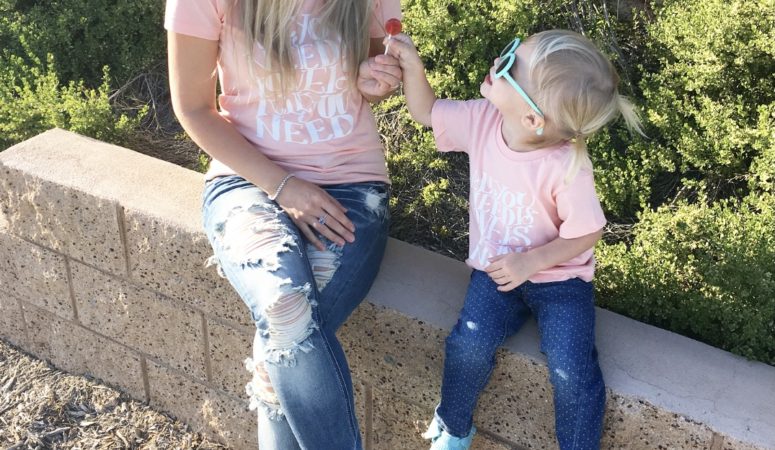Gratitude is about attitude and being grateful and showing gratitude comes with humility and putting others before yourself. And here’s the psychology behind it. Research shows that if you do something good for someone else and or express appreciation for others you end up feeling better about yourself. Studies have shown that generosity, giving back, and showing gratitude to others actually helps decrease stress and depression and increase life span!
In my professional opinion, most children want to be helpful and show appreciation, it’s the way children’s brains are wired. Being thankful is intrinsically motivating, which is behavior that is driven by internal reward. The opposite of this is extrinsic motivation, which is getting money or a tangible reward like candy or a sticker for doing something good. But instead, positive verbal and non verbal praise goes a long way with a child. And the more a child is shown thankfulness for good deeds and behavior, the more they will want to continue doing it more and more. It’s naturally satisfying when someone is happy with you.
I believe the best way to teach children lessons in life is by doing. And starting as early as possible! Showing your children firsthand how to be grateful and give back by volunteering and helping those in need, will in turn help them appreciate what they have and the people around them. Parents are role models and teaching gratitude starts at the parental level. When children watch their parents behave in a particular way, they want to model it, and repeat it over and over again.
Here are some other ways to teach gratitude to children of all ages and cognitive developmental levels:
Babies
Teach them to say please and thank you
Toddlers
Pick new toys at the store and donate them to Toys for Tots, Children’s Hospital, or Operation Christmas Child. You can also pick out old toys to donate to Salvation Army or Goodwill. You can also have frequent conversations with them and point out the people in their lives that do good things for them, so they start noticing to appreciate the good acts of others.
Children
Teach children how to write a thank you note each time they receive a gift from someone. Once a month, encourage them to make a card and give it to a teacher, friend or family member, and or leave a note and some water and snacks for mail carriers to show appreciation for all of the work they do. Beginning to write in a gratitude journal (or them verbalizing and you writing) is also very helpful at this age to teach children about gratitude.
Teenagers
Encourage your tween or teenager to volunteer at a food bank or a soup kitchen for the day so it can help shape and build their perspective on society and be grateful for all that they have. Or they can find a good cause to save up money and donate to and or participate in like a Susan G Komen walk for Breast Cancer where they can raise money and walk the walk! Gratitude journals are also very beneficial at this age. Adolescents love to externalize their feelings and beliefs so this is a way to positively let them express themselves!
Just over a year or so ago, I implemented writing in a gratitude journal every morning with my children. This can work really well for children from preschool age to college. We love sitting down and each taking a turn and hearing what others in the family are grateful for. It really helps put life in perspective and helps focus on all that we have instead of all that we don’t have. You can prompt your children if they need help and then write down a few things/people you are thankful for each day helps gratefulness! If doing a journal together, prompt them with questions like Who are you thankful for? or What are you grateful for?
Here are a few of my favorite Gratitude journals:
Good Days Start With Gratitude: A 52 Week Guide to Cultivate an Attitude of Gratitude
How have you shown your children gratitude? I’d love to hear your ideas, too!
This blog was updated from one published in November 2019 after I was on local television speaking on the topic.



Leave a Reply